
Remember the Yugo? That small, flimsy car that was introduced to the buying public in the 1980s as a sensible, affordable approach to transportation? Some recall that the Yugo was less than wildly popular. Nonetheless, there were buyers, and as a result a generation of Yugos still sit in junkyards, garages, and other final resting places across the nation.
Well, a lucky few of those Yugos - some 29 of them - were adopted by an art class at New York's School of Visual Arts a few years ago and transformed into "Yugo Next," a collection of pieces that became so popular, they were launched on a tour of exhibition halls in 28 US cities. A cigarette lighter, a confessional, a shower, a fireplace, an accordion... Students of artist and teacher Kevin O'Callaghan found amazing ways to give new life to the cast-off vehicles.
Every year O'Callaghan gives his three-dimensional art class an assignment for their spring exhibition, but this particular project was inspired by an invitation from New York's Grand Central Terminal. The class was asked to show their year-end exhibition in the terminal's Vanderbilt Hall. That's a big space: 20,000 square feet on one level, in fact.
O'Callaghan wanted his students to create something that wouldn't get dwarfed in such a large exhibition hall. But he would have to think of what that could be.
"I got the idea when I accidentally turned down a dead-end street on Long Island," says O'Callaghan, also a set designer for films, television and theater. "At the end of the street some kids were playing baseball, and they were using a parked Yugo as their backstop. The car actually looked like it was in pretty good shape, so I was surprised to see them doing that. When I asked them about it, they said their dad let them to do it because he couldn't get the car fixed. There wasn't a factory or even a country to produce the parts that were needed, since Yugoslavia no longer existed. The car was considered junk."
YUGOS WANTED, DEAD OR ALIVE
The question formed in O'Callaghan's mind: "What do you do with a Yugo that won't go?" He ran an ad: "Yugos wanted, dead or alive." And was amazed at the number of people who responded. It didn't take long to amass enough Yugos for the students in his class. Once the motors and interiors were stripped from the cars, they began their creations at an industrial park in St. James, Long Island.
"They transformed the cars into some pretty amazing things, but when they did the project they had no idea the exhibition would end up touring the country," notes Chris Noblit of Avatar Relocation, an Atlas Van Lines agent in Yaphank, Long Island. "Those pieces were not built for moving. The finished works were fragile, and they weighed about 800 pounds each."
And even though the students were required to leave the cars' wheels exposed so that their Yugos could roll, many of them had very delicate facades, some adorned with intricate embellishments. The task of moving the transformed cars would be cumbersome and precarious.
O'Callaghan called Avatar Relocation while the students were still constructing their designs. "When I saw the types of things they were doing with the cars, I knew it was going to be a challenge to move them out of the shop and into Vanderbilt Hall. We started to work on the planning right away."
HANDLE WITH CARE
While crating the Yugos for transportation would've been the easiest way to do the job, crating was out of the question because the cost of labor and materials for 29 items of this size was not feasible, Noblit says. "Pad-wrapping was our only option. And you've got to know how to pad-wrap fragile items like this, or they're not going to make it through the moving process without some kind of damage."
Noblit selected Avatar drivers and handlers who specialize in pad-wrapping delicate or high-value goods. The crew made a visit to the students' workshop to get an idea of what the job would entail.
They evaluated the Yugo designs to calculate each item's particular requirements and the number of pads they would need to do the job. And they began to formulate a plan for loading the exhibit onto air-ride trailers designed for specialized transportation.
Utilizing trailer space as efficiently as possible was a necessity with an exhibit of 29 car-sized works of art (albeit, small cars). Noblit and his crew formulated plans to use decking inside the trailers so that the cars could be loaded in different configurations and in two levels. With planning, plenty of decking, and lift gates on each trailer, the 29 Yugos were fitted into three 48-foot trailers.
"The complicated part was not figuring out how to fit the cars into the trailers," Noblit says. "The tough part was actually loading them."
There was no standard way to go about that, since skids and forklifts were not an option. "Hand-lifting was the way it had to be done, so we used a team of people, some of them from Avatar and some students," Noblit relates.
One by one, with considerable sweat and muscle, the individual creations for the "Yugo Next" exhibit were placed on the trailers. A delivery time had already been coordinated with Grand Central Terminal, and once the pieces were prepared for the trip and loaded for transport, they were driven to their destination - the first, it turned out, in a two and a half-year national tour.
" We had about six Avatar men on the job, additional labor waiting at Vanderbilt Hall, and about eight students who came along to help," Noblit recalls. "The pieces were hand-carried into the exhibition hall. That was, again, a challenging task. And some of the students' designs involved splitting the Yugos into more than one piece. In those cases, the exhibits had to be put back together after they were carried into the hall."
ART: A VERY PERSONAL EXPRESSION
Works of art are very personal things, and that's not always kept in mind when they're handled by movers, O'Callaghan notes. "The Avatar crew understood that to the students, these pieces were valuable and very personal. They had compassion for the students' feelings and treated every piece with the kind of respect we would have asked for," he says. "They took their time and were incredibly patient. After a few moves the drivers became very familiar with the students and with the pieces they were handling. They even showed up at the exhibition openings in some of the cities where they took us. This move could not have been a big money-maker for Avatar, it was so labor-intensive. But the way it was handled made the whole experience very positive."
Because the "Yugo Next" exhibit was so popular, its first showing at New York City's Grand Central Terminal remained for a full month. When the subsequent invitation came to show the exhibit at Union Station in Washington DC, there wasn't much time to prepare for the trip.
"We had three days to organize the move to Washington, so I called Avatar again, and Chris pulled the job together in just a few days. He sent hand-picked drivers and handlers again, and Avatar got us to DC on time, and without any setbacks," O'Callaghan notes.
MAKING A NAME
The National Endowment of the Arts in Washington, DC described "Yugo Next" as "one of the greatest ever examples of public art." (Another of O'Callaghan's class exhibits became the first student art project ever featured at the Whitney Museum of American Art in Manhattan.) As "Yugo Next" toured, the show generated more and more interest. By the end of its national run, which eventually included Los Angeles, Chicago, St. Louis and Montreal, numerous magazine and TV stories - and 178 newspaper articles - had featured the transformed Yugos.
An editorial in the Washington Post by David Von Drehle said, "The concept is a little tricky for adults passing through the station. 'What, are you trying to sell cars?' one asks. But kids get it immediately, rushing from one to the next. 'A fireplace car!' 'Look, it's a movie theater!' Kids immediately understood everything but the 'Do Not Touch' signs." Von Drehle's article simply ended with, "Wow."
The Yugo exhibit isn't the only project by O'Callaghan's art class that has garnered national attention for the School of Visual Arts. There was a unique typewriter exhibit, created from abandoned manual typewriters that were rescued from New York repair shops; a working carousel with famous figures from the past 100 years called "The Turn of the Century"; and in response to the events of September 11, an exhibition of operational gas masks that were transformed into off-the-wall designs such as a chandelier and a Las Vegas-style headdress.
"Some of our exhibitions have been pretty tough to transport - and any time we send our work on the road, we have to depend on the movers to handle the pieces with care and respect," O'Callaghan comments. "We can't always choose the mover because some exhibit halls contract their own shippers. That's how we've learned that the mover makes all the difference in the way our exhibits fare when they're on the road."
* * *
© Copyright Tom Magliery, All Rights Reserved
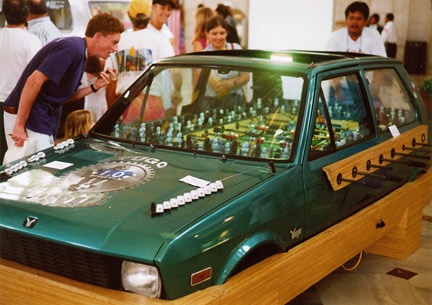
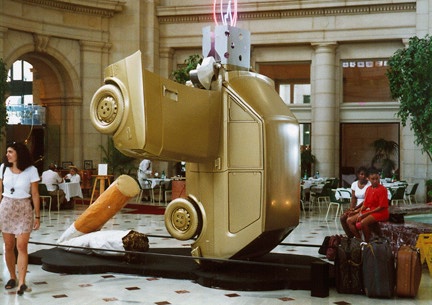

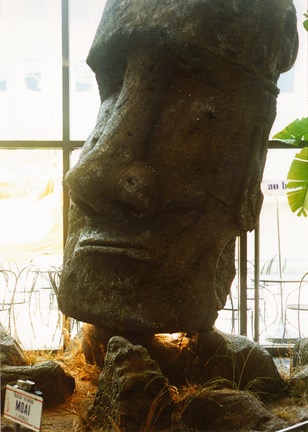
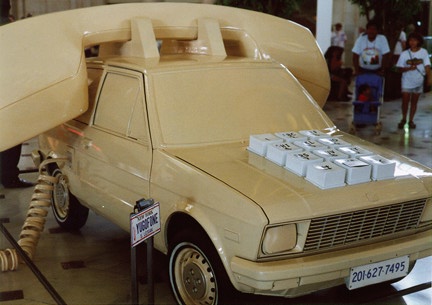

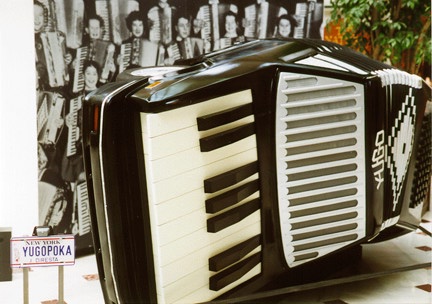
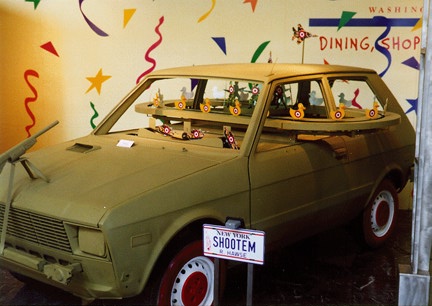
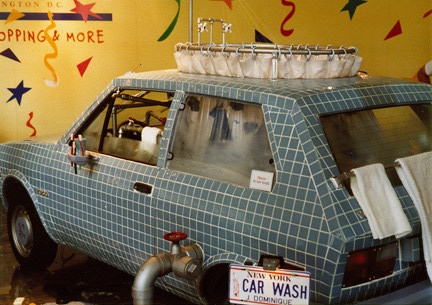
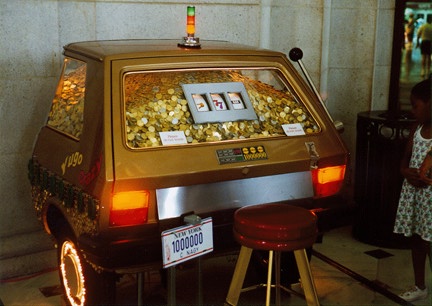

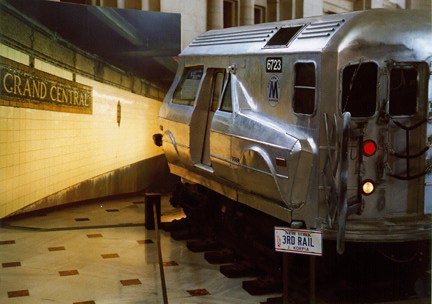
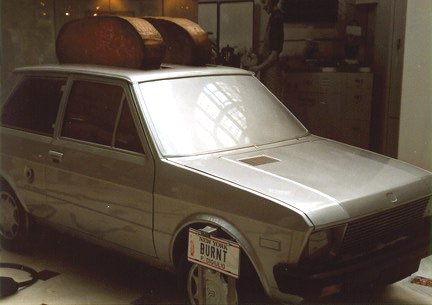
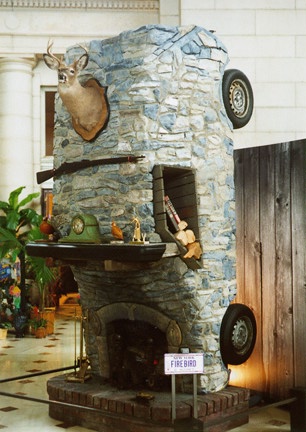

Add new comment